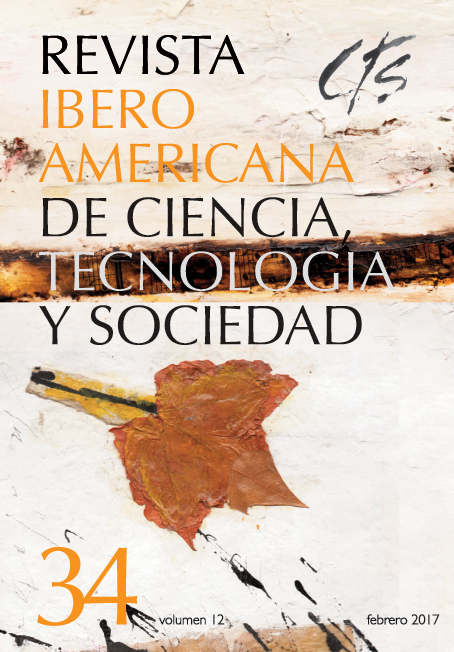Universities And Third Mission Policies In The United Kingdom: A Framework For The Discussion Of The Proposed Indicators In The Manual De Valencia
Keywords:
third mission activities, system of indicators, incentives, institutional mission, the socio-economic role of universitiesAbstract
In the context of the elaboration of the Manual de Indicadores de Vinculación de la Universidad con el Entorno Socioeconómico -or Manual de Valencia-, this paper offers a review of third mission policies as they have been developed in the United Kingdom for the last three decades. This country was the first to implement a system of financial incentives on the basis of an annual survey for the universities that carry out third mission activities. The aim of this paper is to offer a frame of reference for the ongoing efforts being developed in Ibero-America regarding the promotion, measurement and checking of third mission activities in its universities. One of our main conclusions is the need to design a system of indicators comprehensive enough for the universities to be able to reflect upon the variety of third mission activities in which they are engaged, regardless of how quantifiable are their results.Downloads
References
BEKKERS, R. y BODAS FREITAS, I. (2008): “Analysing knowledge transfer channels between universities and industry: To what degree do sectors also matter?”, Research Policy, vol. 37, pp. 1837-1853.
BRINKLEY, I. (2006): Defining the Knowledge Economy. Knowledge Economy Programme Report, Londres, The Work Foundation. Disponible en: http://www.theworkfoundation.com/assets/docs/publications/65_defining%20knowledge%20economy.pdf.
D’ESTE, P. y PATEL, P. (2008): “University-industry linkages in the UK: What are the factors underlying the variety of interactions with industry?”, Research Policy, vol. 36, pp. 1295-1313.
ETZKOWITZ, H. y LEYDESDORFF, L. (2000): “The dynamics of innovation: From national systems and ‘Mode 2’ to a triple helix of university-industry-government relations”, Research Policy, vol. 29, pp. 1098-1123.
HEWITT-DUNDAS, N. (2012): “Research intensity and knowledge transfer activity in UK universities”, Research Policy, vol. 41, pp. 262-275.
LAWTON SMITH, H. y WATERS, R. (2015): “Regional synergies in triple helix regions: The case of local economic development policies in Oxfordshire, UK”, Industry & Higher Education, vol. 29, n° 1, pp. 25-35.
RESEARCH INFORMATION NETWORK (2010): Making sense of research funding in uk higher education - Research Information Network Factsheet. Disponible en: http://www.rin.ac.uk/system/files/attachments/Making_sense_of_funding.pdf.
MOLAS GALLART, J. (2002): “Measuring third stream activities”, Final Report to the Russell Group of Universities, Science Policy Research Unit (SPRU), University of Sussex.
MOLAS GALLART, J. y CASTRO MARTÍNEZ, E. (2007): “Ambiguiety and conflict in the development of ‘Third Mission’ indicators’”, Research Evaluation, vol. 16, n° 4, pp. 321-330.
ROSLI, A. y ROSSI, F. (2013): “Indicators of university-industry knowledge transfer performance and their implications for universities: Evidence from the UK’s HE-BCI survey”, CIMR Research Working Papers Series, n° 13, Birkbeck University, pp.1-24. Disponible en: http://www.bbk.ac.uk/innovation/publications/docs/CIMR-WP-13.pdf.
ROSLI, A. y ROSSI, F. (2014): “Explaining the gap between policy aspirations and implementations: The case of university-knowledge transfer policy in the United Kingdom”, CIMR Research Working Papers Series, n° 20, Birkbeck University. Disponible en: http://www.bbk.ac.uk/innovation/publications/docs/WP20.pdf.
ROSLI, A. y ROSSI, F. (2016): “Third-mission policy goals and incentives from performance-based funding: Are they aligned?”, Research Evaluation, pp. 1-15. Disponible en: http://rev.oxfordjournals.org/content/early/2016/06/16/reseval.rvw012.full.pdf.
WATERMEYER, RICHARD (2016): “Impact in the REF: Issues and obstacles”, Studies in Higher Education, vol. 41, n° 2, pp.199-214.
WATSON, D. et al. (2016): “Trick or treat: Academic buy-in to third stream activities”, Industry and Higher Education, vol. 30, n° 2, pp. 155-167 y 155-156.
Downloads
Published
How to Cite
Issue
Section
License
All CTS's issues and academic articles are under a CC-BY license.
Since 2007, CTS has provided open and free access to all its contents, including the complete archive of its quarterly edition and the different products presented in its electronic platform. This decision is based on the belief that offering free access to published materials helps to build a greater and better exchange of knowledge.
In turn, for the quarterly edition, CTS allows institutional and thematic repositories, as well as personal web pages, to self-archive articles in their post-print or editorial version, immediately after the publication of the final version of each issue and under the condition that a link to the original source will be incorporated into the self-archive.











